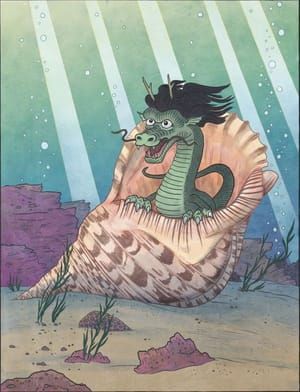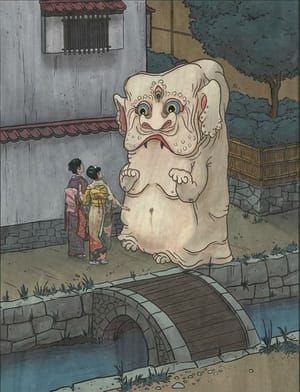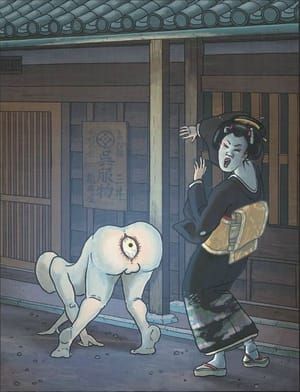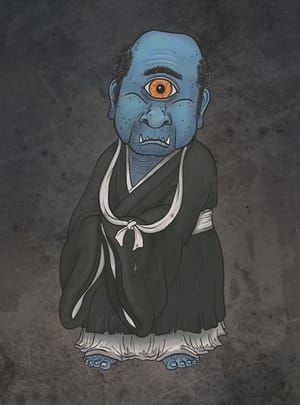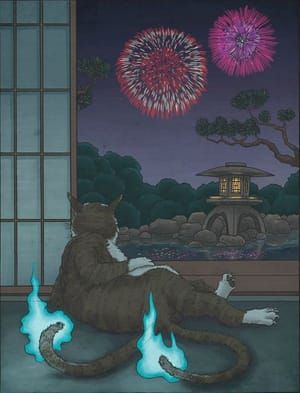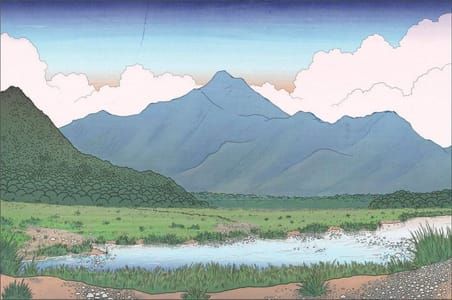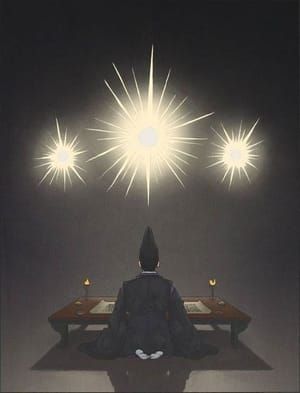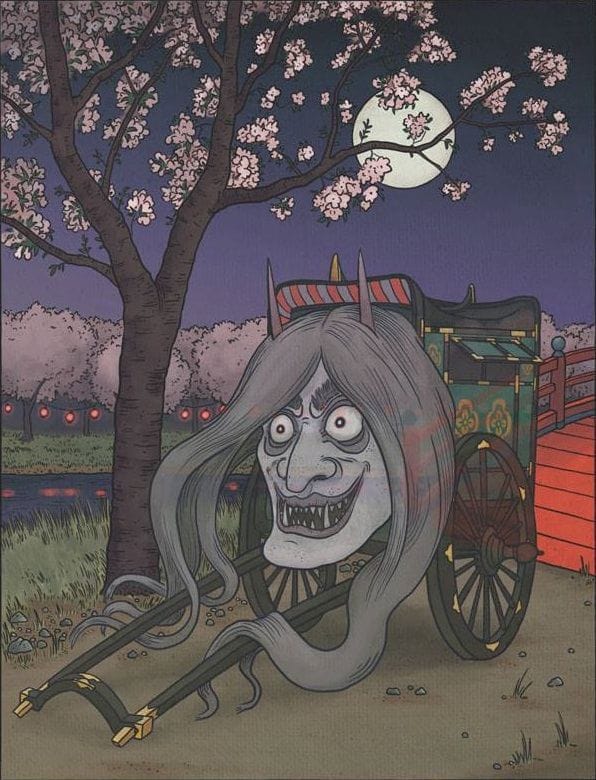

Oboroguruma
Matthew Meyer
朧車
On misty, moonlit nights, residents of Kyōto occasionally hear the squeak of an oxcart in the street. Stepping outside to check and see, they discover a half-transparent, ghost-like oxcart with an enormous, grotesque face parked outside of their home.
Carriage yōkai have existed in picture scrolls for hundreds of years. They may originally have been a kind of tsukumogami, or object-turned-yōkai. Most of these scrolls were created for their vivid imagery rather than for any particular story. Oboroguruma may have initially been created without any backstory. When Toriyama Sekien published his yōkai bestiaries, he included the oboroguruma and gave a description. He linked it to a famous scene in The Tale of Genji when Lady Rokujō and her rival Lady Aoi competed for a parking space and got into a carriage fight.
Long ago, sightseeing in the capital was accomplished by means of oxcart taxis. When it got crowded—particularly during festival seasons—the taxi drivers got into carriage fights. They slammed their carriages against each other to grab the best spots for sightseeing. Just like parking can be a problem in cities today, parking in ancient Kyōto was a huge source of frustration.
The resentment of nobles who didn’t get the prime sightseeing spot they wanted was something to be feared. The negative feelings could build up and become a powerful force of their own, which is where these yōkai come from. Oboroguruma materialized out of the wrath of nobles who lost these carriage fights and were not able to reserve the sightseeing spots that they wanted.
Matthew Meyer
artistArthur
Wait what?
